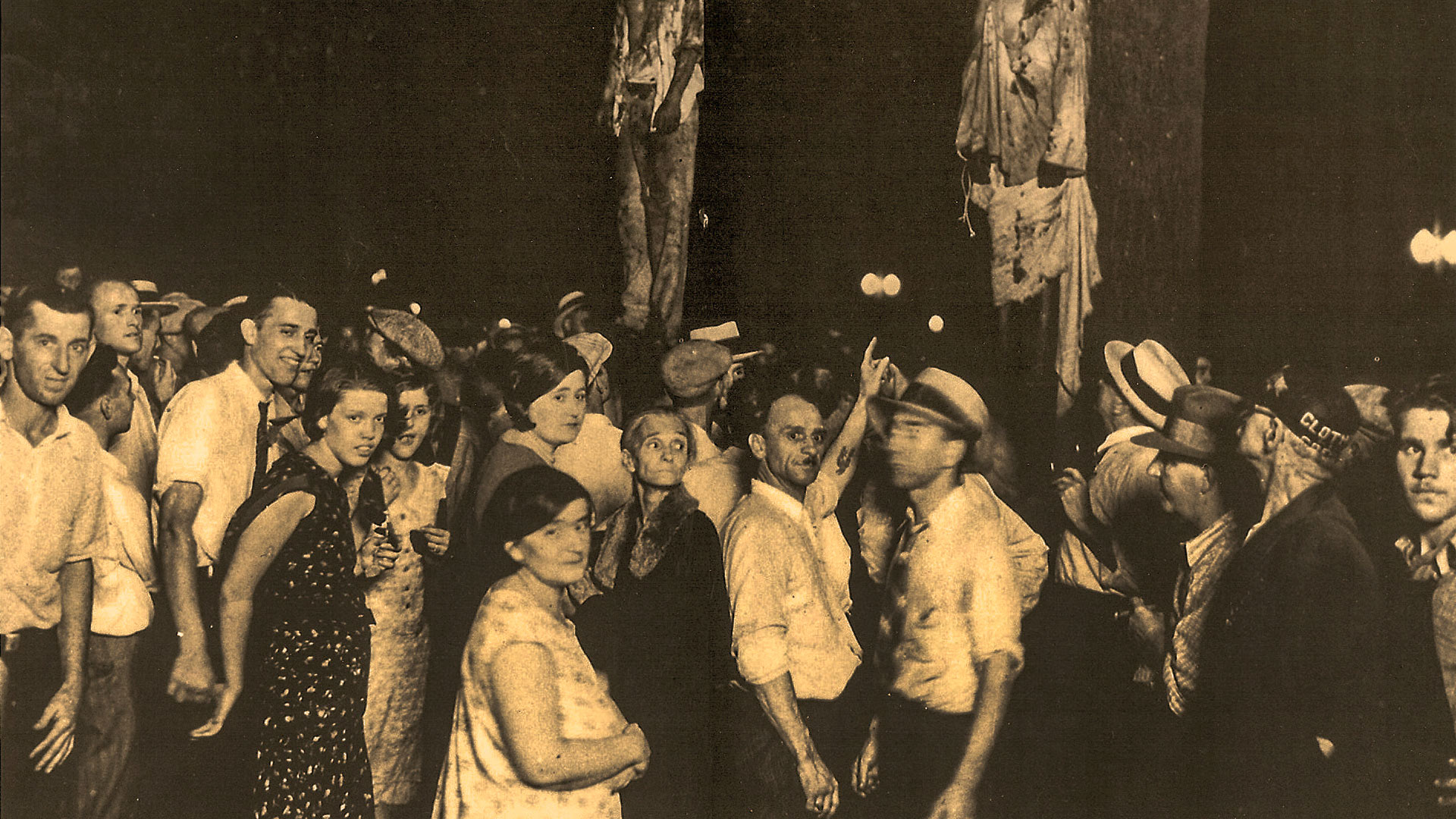The turnout was strong for a Tuesday—more than 3,000 men, women, and children by most accounts—thanks to the announcement in the local newspaper about where and when the event would take place. By 9:00am, lines of cars choked the Macon Road near the Wolf River Bridge, bringing traffic to a standstill. Amid the excitement, mothers (many in their best finery) were willing to overlook the schoolboys playing hooky, and vendors exhausted their supply of drinks and snacks much sooner than expected. Then, with anticipation building and reporters on hand to capture the details, Ell Persons was chained to a log, doused with gasoline, and burned alive. Once Persons’ charred corpse had cooled, the crowd pressed in to snatch any scrap of burnt clothing or rope as a keepsake. The body was decapitated and dismembered, the ears and other parts removed for souvenirs. Persons’ head and one of his feet, however, would serve another purpose—the larger objective of the gruesome spectacle. They were taken to busy Beale Street, in the heart of Memphis’ African American community, and tossed from a car at the feet of pedestrians, with this message: “Take this with our compliments.”
History
According to a comprehensive report published by the Equal Justice Initiative in 2015, there were some 4,084 acts of racial terror—in the form of public lynchings—perpetrated against African Americans and their communities in twelve southern states between 1877 and 1950. These were acts of torture and murder, often committed in public in broad daylight and largely tolerated by state and local officials. Their purpose was not to exact justice or punishment—the criminal justice systems in these states were more than ready to do that when African Americans transgressed laws—their purpose was to maintain power and control in a new society in which the long-established racial hierarchy, once completely enshrined by law, was being threatened.
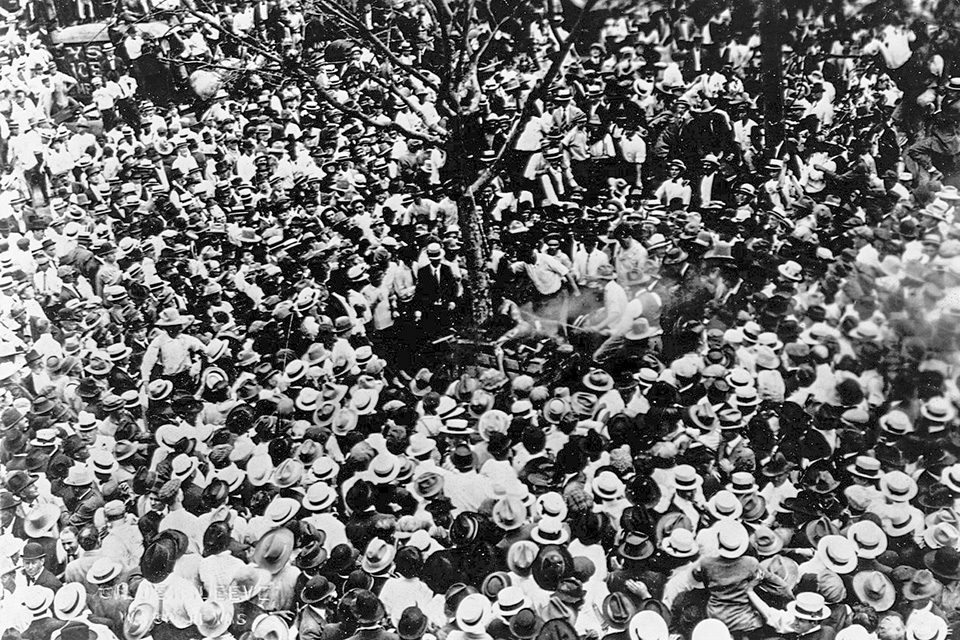 The lynching of Jesse Washington in Waco, TX, 1916, photo courtesy Library of Congress.
The lynching of Jesse Washington in Waco, TX, 1916, photo courtesy Library of Congress.
While the grisly details of each case differ, these documented “terror lynchings” nonetheless have much in common: The victims were afforded no semblance of legal due process, and those who conducted the lynchings were not held criminally responsible for them. These were openly sanctioned acts of domestic terrorism (before that term was coined) that perpetrated murder with impunity despite a functioning criminal justice system. Some of the lynchings, such as that of Ell Persons, were “public spectacle lynchings,” advertised in the newspaper, enthusiastically attended by the community in broad daylight, and commemorated with postcards and memorabilia.
The twelve states where lynchings were most prevalent were Alabama, Arkansas, Florida, Georgia, Kentucky, Louisiana, Mississippi, North Carolina, South Carolina, Tennessee, Texas, and Virginia. Of all the counties in Tennessee where such lynchings occurred, the greatest number have been documented in Shelby County, now the home of the Lynching Sites Project of Memphis (LSP), formed in 2015. That initiative has developed a working list of 37 lynching victims killed in 25 separate lynchings, and seeks to memorialize them with historical markers and ceremonies that include descendants of the victims.
The following four cases are representative of the stories the project is bringing to light:
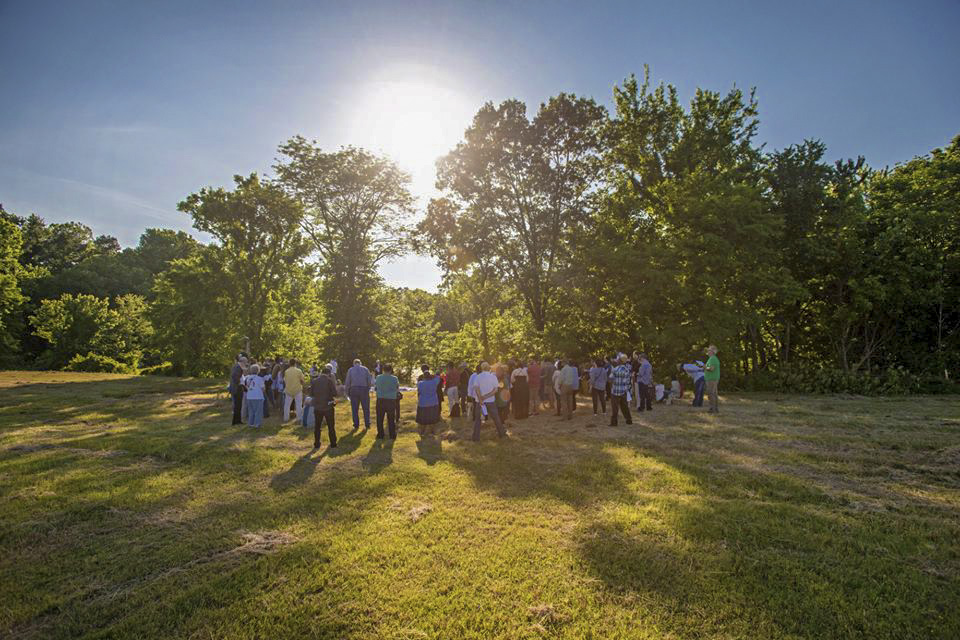 Service commemorating the lynching of Lee Walker in Shelby County, TN, photo courtesy Jessica Orians, 2018.
Service commemorating the lynching of Lee Walker in Shelby County, TN, photo courtesy Jessica Orians, 2018.
The Lynching of Lee Walker
On July 21, 1893, a black laborer from Mississippi named Lee Walker was arrested because he fit the description of a man who allegedly attempted to sexually assault two White women several days earlier. On July 22, he was placed in the downtown Memphis jail. A mob stormed the jail that same night, dragged Walker from his cell, and beat and stabbed him ruthlessly. Two blocks north of the jail they hanged him from a telegraph pole. After Walker was dead, the mob burned his body, took souvenirs from his mutilated corpse, and dragged it to the courthouse.Walker’s remains were eventually buried in a potter's field. Neither of the women who claimed the attempted assault had an opportunity to identify Walker as the assailant. The day before the lynching, the Memphis Public Ledger, one of the oldest newspapers in the city, sent a telegram to the Inter-Ocean newspaper in Chicago, which read, “Lee Walker, colored man, accused of raping white women, in jail here, will be taken out and burned by whites tonight. Can you send Miss Ida Wells to write it up?”
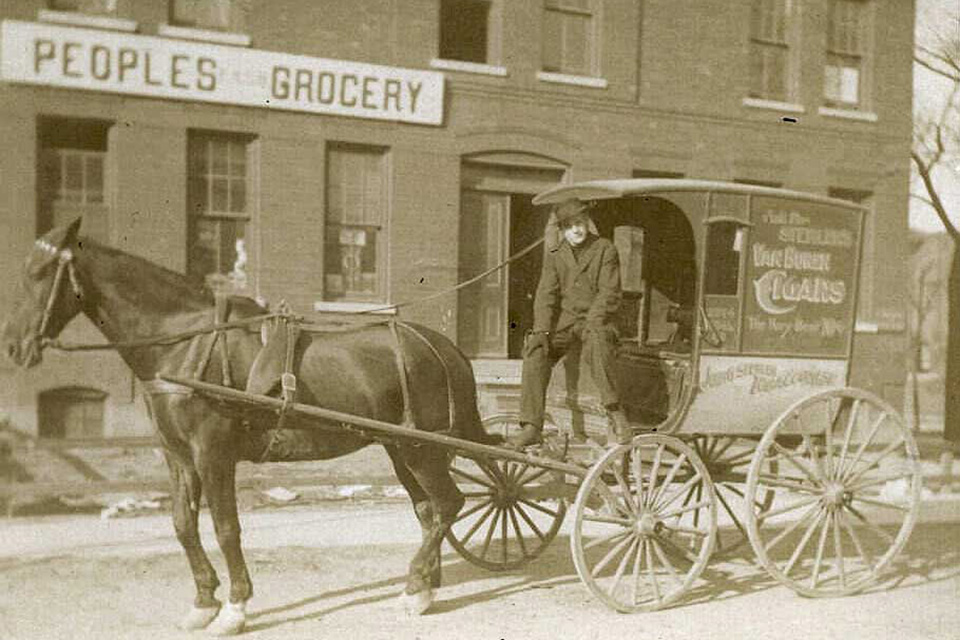 The Peoples Grocery in Shelby County, TN (date unknown), photo courtesy Lynching Sites Project Memphis.
The Peoples Grocery in Shelby County, TN (date unknown), photo courtesy Lynching Sites Project Memphis.
The Lynching at the Curve
In March 1892, a white grocer named William Barrett was aggrieved that his business was losing money because of the success of the nearby People’s Grocery, located in a mixed-race neighborhood at the corner of Memphis’ Mississippi Boulevard and Walker Avenue. The People’s Grocery was operated by postman Thomas Moss, along with employees Will Stewart and Calvin McDowell—three African American men. After rumors circulated that Barrett had been injured by Stewart in a scuffle outside the store, he and a police officer returned to apprehend Stewart, who was not there. After an altercation and gunfire, McDowell was arrested but later released on bond. Barrett further alleged that the area’s African American residents were secretly planning to move against the white community; subsequent remarks in the local newspaper talked of a posse forming to clear out the troublemakers from the neighborhood. Fearing an attack by a mob, Moss sought legal help and police protection but was told his store was beyond the jurisdiction of the Memphis police.When a posse of armed white men—including a county sheriff and five deputized civilians—approached the rear of People’s Grocery, they discovered that the group within the store had armed themselves. Several of the posse members were injured in an exchange of gunfire. Another group of deputized citizens was soon dispatched. Thomas Moss, Will Stewart, and Calvin McDowell were eventually arrested and jailed. On March 9, 1892, the downtown jail was attacked by a mob, and Stewart, Moss, and McDowell were abducted and taken to the nearby Chesapeake and Ohio rail yards. Although the three men fought their captors, McDowell was shot, Stewart resisted until he, too, was shot in the neck, and when Moss was asked whether he had any final words, he said, “tell my people to go west. There is no justice for them here.” Moss was then killed, his body left with the others under a pile of brush.
These events are known as the Lynchings at the Curve. Ida B. Wells wrote in 1892’s Crusade for Justice about her friend Thomas Moss, “a finer, cleaner man than he never walked the streets of Memphis. He was well liked, a favorite with everybody; yet he was murdered with no more consideration that if he had been a dog...The colored people feel that every white man in Memphis who consented in his death is as guilty as those who fired the guns which took his life...with the aid of the city and county authorities and the daily papers, that white grocer had indeed put an end to his rival Negro grocer as well as to his business.”
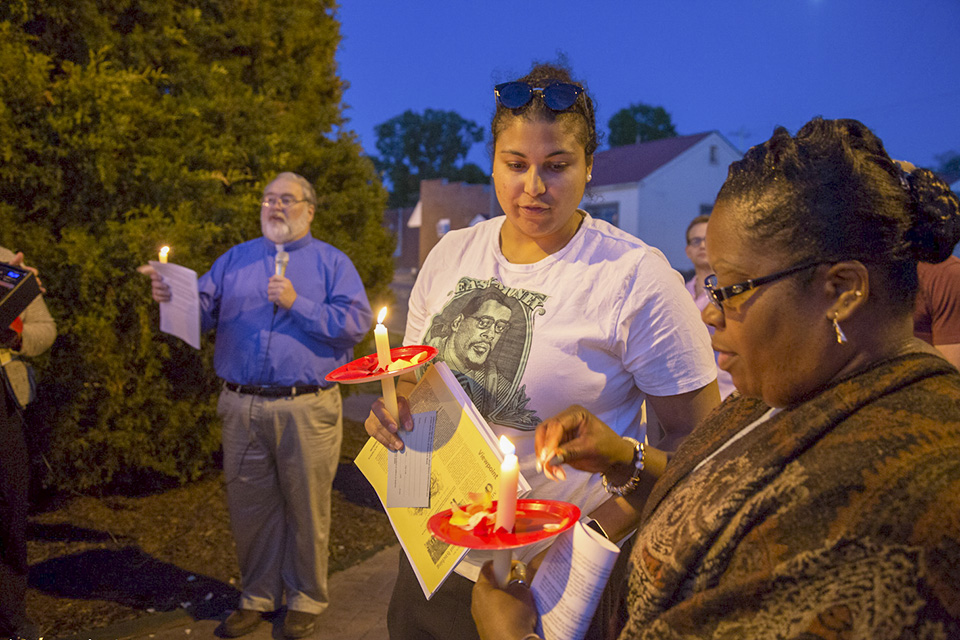 Candle-light service on the 79th anniversary of the Jesse Lee Bond lynching, TN, photo courtesy Jessica Orians, 2018.
Candle-light service on the 79th anniversary of the Jesse Lee Bond lynching, TN, photo courtesy Jessica Orians, 2018.
The Lynching of Jesse Lee Bond
Jesse Lee Bond was a twenty-year-old African American cotton farmer who came to the S.Y. Wilson Store in Arlington, Tennessee, to purchase planting supplies on April 28, 1939. He asked for a receipt after purchasing his goods, which led to an argument. Sam T. Wilson, the store cashier, reluctantly gave him the receipt. After the store owner (Sam Wilson’s father, Charles Robert Wilson) was told of the incident, he reportedly became furious and sent Sam Wilson to retrieve Bond and the purchased merchandise. Bond returned to the store with his aunt Luanna Bond. As soon as the two entered the store, Charles Robert Wilson and a store employee drew guns and fired at Bond. The two chased him from the store, finally capturing him. In broad daylight, the men castrated Bond before dragging his body behind a truck to the Loosahatchie River, where his corpse was staked down beneath the water. Local authorities found Bond’s corpse five days later, and the coroner recorded on Bond’s death certificate that the victim “fell in the Hatchie River and accidentally drowned.”Bond’s funeral and burial at Grays Creek Church attracted a large crowd, many of whom were from neighboring counties and came to protest the actions of the local authorities. No grave marker was placed on the grave, and, to this day, it remains unmarked. Indeed, there is no historical marker acknowledging the event at all. Legal records from the Shelby County archive show that Charles R. Wilson and William Johnson were charged with first-degree murder and tried before a jury. An article in the January 23, 1940, issue of the Commercial Appeal indicates that the two men were eventually acquitted. After more than seven decades, Charlie Morris, the 97-year-old brother of Jesse Lee Bond, succeeded in bringing these events to light.
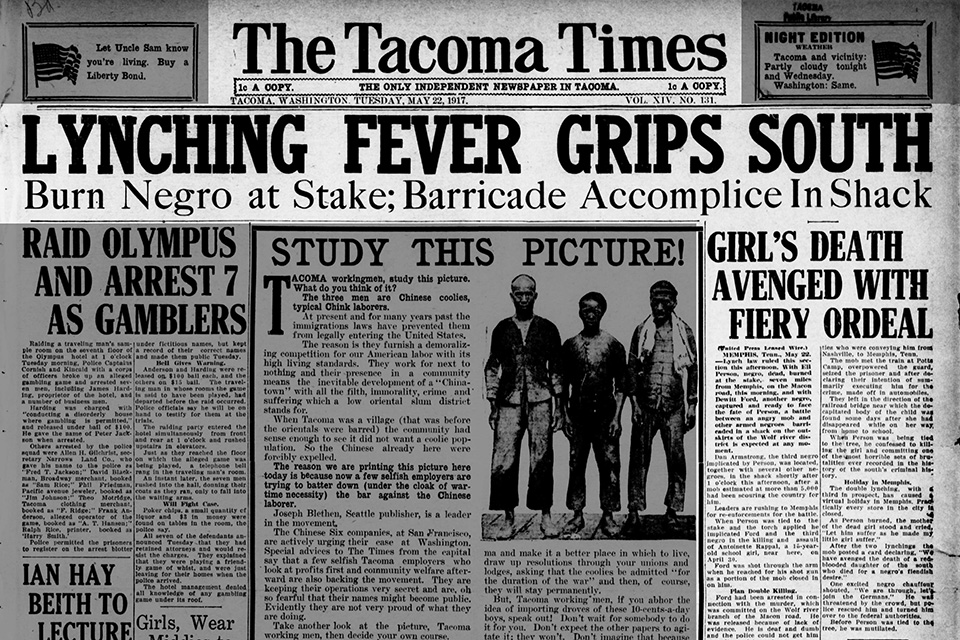 The Tacoma Times reports on the lynching of Ell Persons, 1917, image courtesy Lynching Sites Project Memphis.
The Tacoma Times reports on the lynching of Ell Persons, 1917, image courtesy Lynching Sites Project Memphis.
The Lynching of Ell Persons
In May 1917 the decapitated body of a fifteen-year-old White girl named Antoinette Rappel, a student at Treadwell School, was discovered at the old Wolf River Bridge located near what is presently Summer Avenue in Memphis. Ell Persons, an African American woodcutter who lived nearby, was suspected of murdering her. Persons was arrested twice, interrogated twice, and released twice before finally being captured a third time and reportedly beaten until he confessed. After a mob abducted Persons, local newspapers wrote that he was to be burned on May 22, 1917. A crowd estimated at more than 3,000 gathered to watch. Vendors set up concession stands and sold sandwiches and snacks. It was reported that the atmosphere of the lynching was like that of a carnival. A local schoolmaster noted that some 50 boys were absent that day, encouraged to attend the lynching.Persons was taken to a cleared-out space beside an abutment on the Wolf River Bridge. There he was bound with ropes and chained to a log. Several containers of gasoline were poured over his body. Many onlookers complained that too much gasoline had been used, and that he burned too quickly. Once his body had cooled, it was decapitated and pillaged for souvenirs. The severed head was photographed and printed on postcards. Other parts of Persons’ body were driven to Beale Street, a busy hub of the city’s African American community, and thrown from a car at the feet of passing pedestrians. No one was ever arrested for these crimes.
The effects of this terrible chapter in U.S. history continue to be felt today. The formation of many African Americans ghettos in northern cities can be traced to the mass exodus of those who fled the South to escape racial terror. And while scholarship has long shown that lynching discouraged voter participation among African Americans in the post-Reconstruction South, the historical phenomenon of lynchings continues to cast similar shadows today. Recent research by Dr. Jhacova Williams, an assistant professor in Clemson University’s Department of Economics, has shown, for example, that “southern counties that experienced a higher number of historical lynchings have lower voter registration rates of blacks today.”

Threat
The greatest threat facing these cultural landscapes of racial terror is their obscurity: The overwhelming majority of all lynching sites in the United States are unmarked. Thanks to the work of the LSP and other organizations, three of the above lynchings have been commemorated with historical markers that give descriptions of the events. None of the locations is well-known or otherwise commemorated. In the case of the Lynching at The Curve, the marker is placed on the street corner of the parking lot of what is now Sam’s Food Market. The historical marker that remembers the lynching of Ell Persons is presently placed just off Summer Avenue, the largest road near the site of the lynching. There are plans to relocate the marker to the bridge abutment where the torture and murder took place, as soon as that site becomes more easily accessible—hopefully with the completion of a trail leading to the site, built by the Wolf River Conservancy. An historical marker informing about the lynching of Lee Walker is located on a grass slope next to train tracks and a two-story, multi-use building. The site where Jesse Lee Bond was killed, the S.Y. Wilson store, remains intact and functioning, but there is no marker or indication of what occurred there.
What You Can Do to Help
The LSP was established as “part of a growing network of people who want the whole and accurate truth to be told about the history of Shelby County.” The organization was founded with the conviction that today’s community members “can heal and grow in understanding when we face openly the history of racial violence in our community.” Following rigorous documentation, exposing and marking the sites of lynchings are the first steps in confronting the communal injustices embodied in these cultural landscapes of racial terror. But marking lynching sites is not the only a way to honor those lives that were lost. The LSP commemorates the anniversaries of lynchings in Shelby County by holding candlelight vigils with victims’ family members in attendance, alongside others from the local community. The LSP is also actively seeking to place a tombstone on the as yet unmarked grave of Jesse Lee Bond. Tax-deductible donations to support their work can be made through the Community Foundation of Greater Memphis or by mailing a check (with “Lynching Sites Project” indicated on the memo line) to the Community Foundation of Greater Memphis, 1900 Union Avenue, Memphis, TN 38104.
To create a place for reflection and healing, the non-profit Equal Justice Initiative, based in Montgomery, Alabama, opened the National Memorial for Peace and Justice in April 2018, colloquially referred to as the lynching museum. The memorial comprises more than 800 individual monuments—one for each U.S. county where racial terror lynchings occurred—inscribed with the names of victims. One objective of the memorial is for each county where lynchings occurred to claim and install its monument locally. In this way, sites associated with these horrific events will be seen in a new light, as public landscapes around the country are altered to reflect and interpret this passage in the nation’s history—a goal that LSP hopes to achieve for Shelby County soon.

